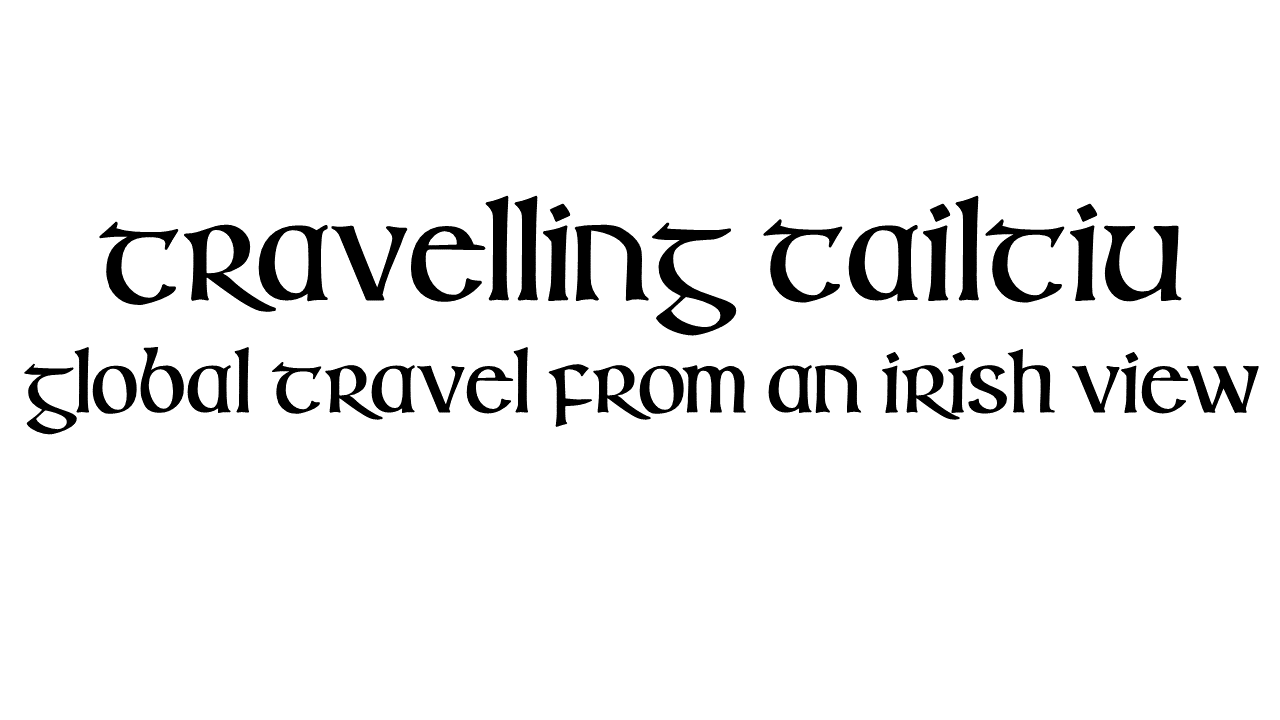The Book of Kells
The book that turned darkness into light
The Book of Kells is an ancient text dating from the ninth century. It is on display in Trinity College, a not-so-ancient yet very old and leafy university in the centre of Dublin, just south of the River Liffey.
It is considered a masterpiece of illumination, and its exhibition contains its own insights into the lives of monk scribes working on the text. A history of literacy in Ireland awaits within the walls of the old library of Trinity.
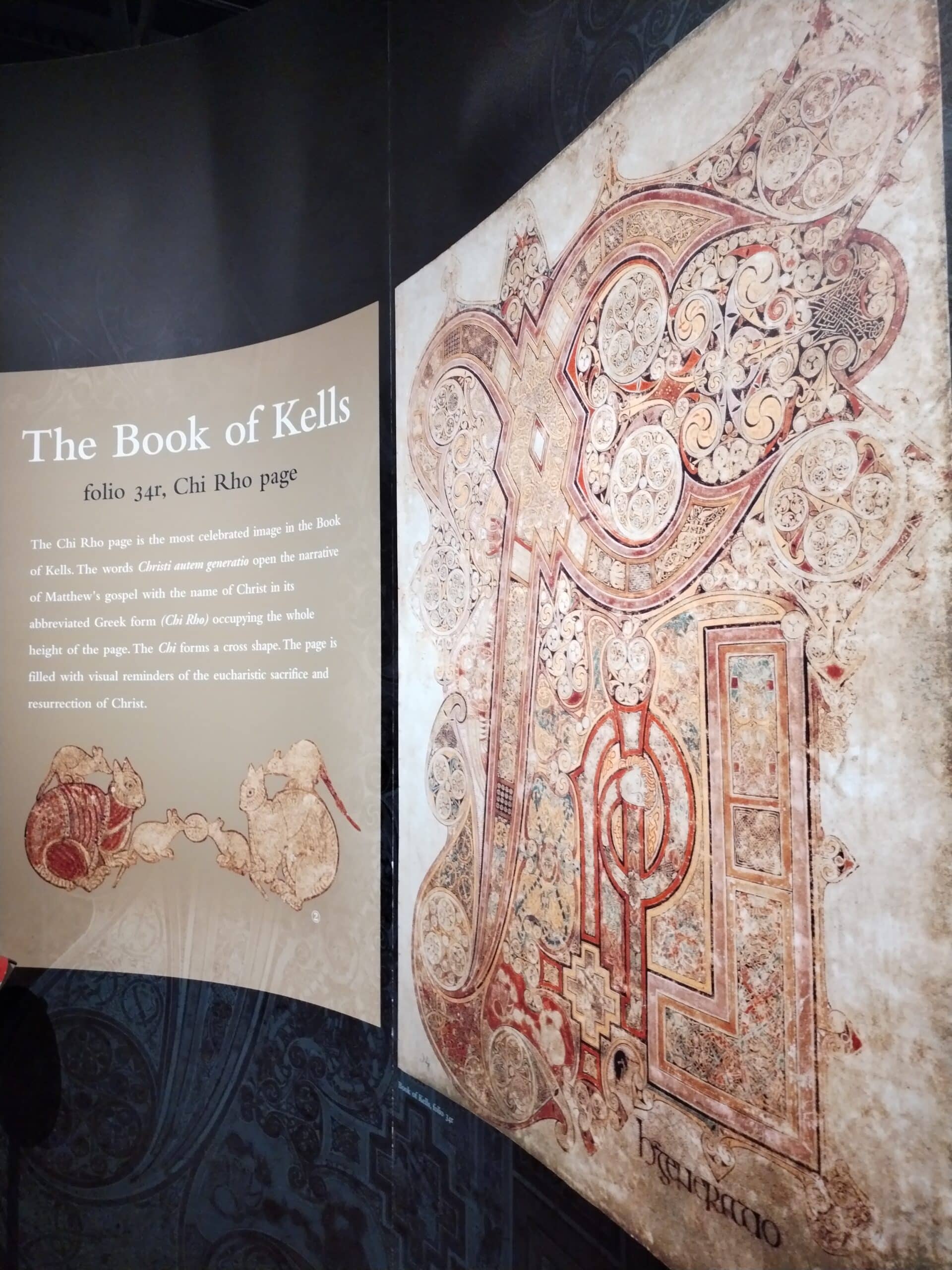
The Book of Kells exhibition
Gardens of knowledge
Trinity College is the famous seat of learning in the centre of Dublin, having educated many prominent luminaries since the late sixteenth century. As you enter from College Green at the university's western end, you pass Edmund Burke's statue. Burke, the famous statesman and political philosopher, studied here. Through the gate, the gardens open up and you are into a world of academia. It seems like a nice place to relax, so even a walk round the place would justify a visit to Trinity.
The Secret of Kells
If you get an opportunity, have a look at the animated film The Secret of Kells from Irish animation studio Cartoon Saloon. You can read more about the studio here. If you want to see a version of modern Irish storytelling interweaving ancient folklore and history into modern social or emotional realities, The Song of the Sea is a must-see. The story of selkies, seal-beings, amidst modern emotional loss is especially poignant, with its follow-up Wolfwalkers a spirited folkloric tale. These three films make up a trilogy of Irish folklore from the studio.
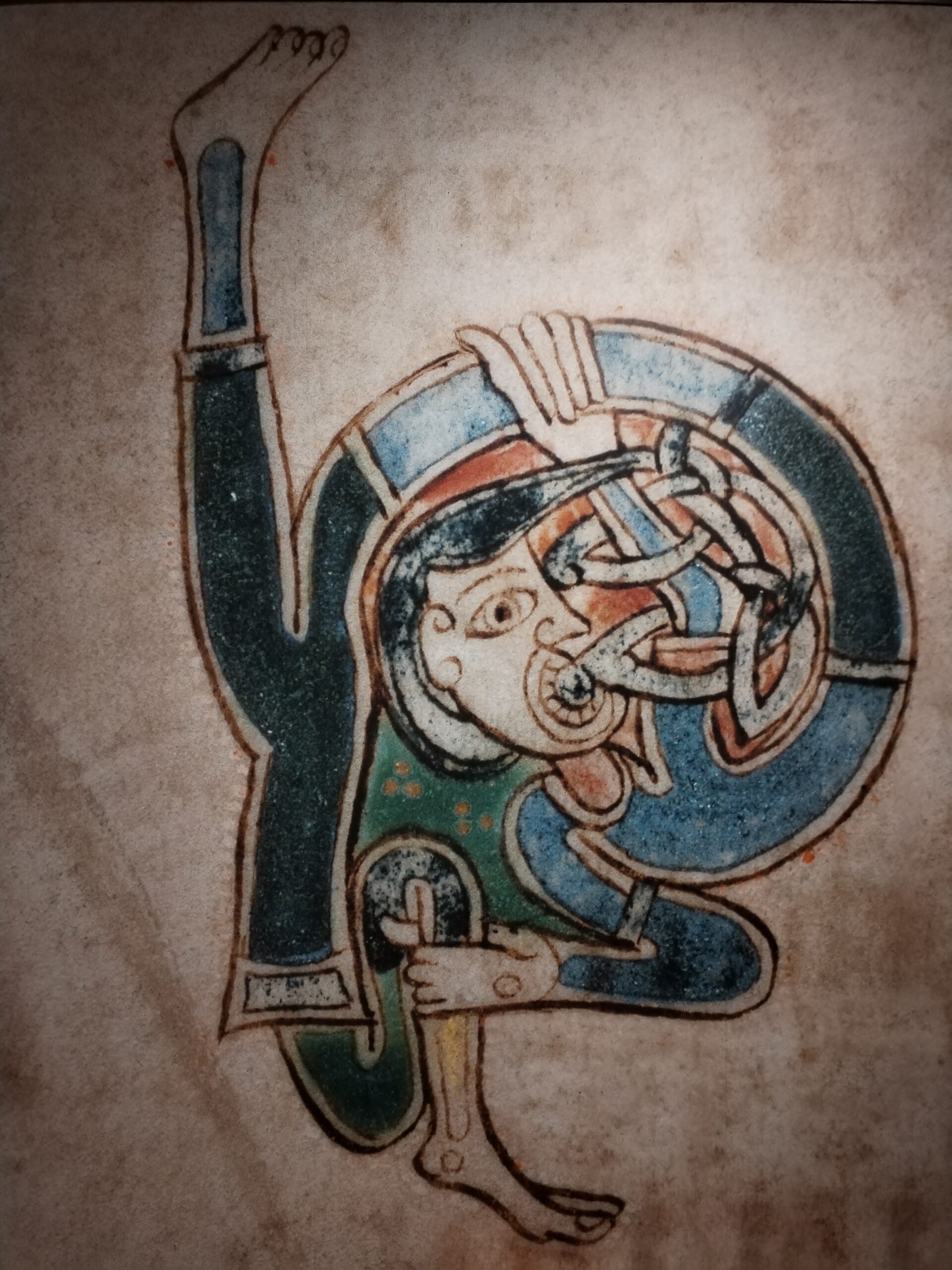
Letterwork from the Book of Kells
The Secret of Kells takes us into the ancient world, during the writing of the Book of Iona. At this turbulent time, the monk-scribes must avoid fearsome Viking raiders attacking monasteries throughout Ireland and Scotland. They must protect the book, yet complete it in an artistic glory befitting of its subject matter. To do this, young Brendan the monk requires the help of those of the old religion, the pagan gods, to complete the masterwork. Then he must hide with it in and around the walls of the Abbey of Kells from the marauding Vikings. By the end, does the great book go under a new name?
Dublinia
The Vikings weren't all bad, and you can thank them for founding the city which now hosts the book. You can learn about Viking influence in Ireland in Christchurch, a Norse construction and Ireland's first cathedral. Christchurch hosts a museum on the theme of the Viking, Norman and Medieval eras of the city. You can read more about this, the Dublinia exhibition, and our latest visit to it here.
In any case, the text survived what we know as the Viking Age. The Norse-Irish ended up abandoning the old heathen religion, making the nation even more solidly Christian.
The Book of Kells exhibition
This is in the library building at Trinity, and recounts the history of literacy in Ireland from centuries before the great book's existence. The Irish are famous for literature, with writing becoming a big thing with Christianity's arrival. Prior to Christianity, there was a rich oral storytelling tradition and the ancient druids placed much importance on memorisation of knowledge. The same went for the bards, the ancient storytellers who travelled the land telling their tales. However, there was already a system of writing in place in pre-Christian Gaelic Ireland.

Ogham
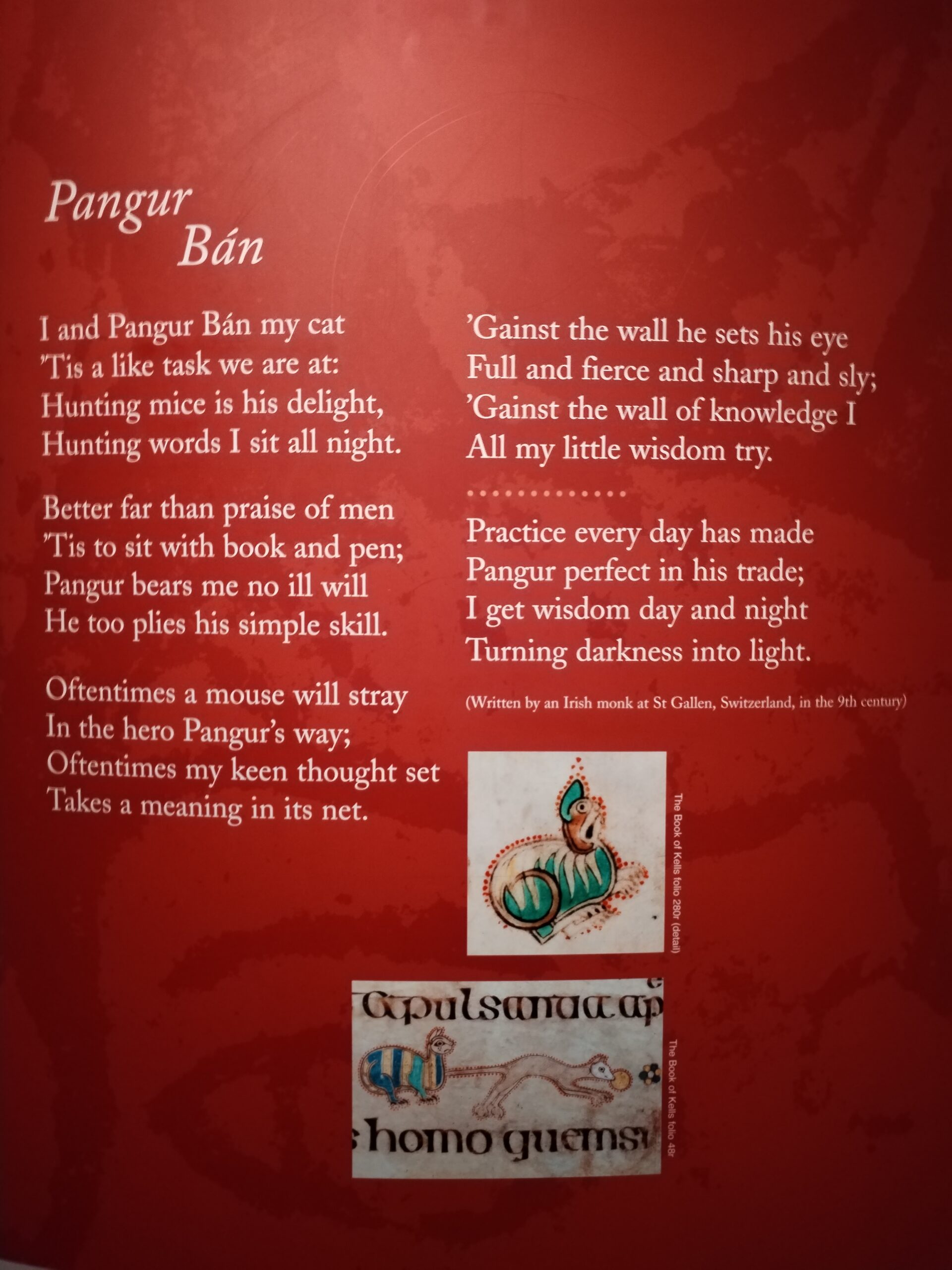
The Pangur Bán poem. Click to see full size
The dawn of Irish writing
Prior to the coming of Christianity, there was a letter system carved into long rocks. This was Ogham and it appears on the edges of vertical standing stones, recording personal names for various reasons. Some of the standing stones are here on display in the exhibition.
If you wish to learn more about Ogham inscriptions, Ogham Art is a small company with a lively Facebook page. It is replete with information on the writing style and plenty of other aspects of Irish culture. You can see the page here.
Books related to the Book of Kells
The Books of Mulling, Dimma, Durrow and Armagh are related texts held by Trinity. Modern scholars consider these as building towards the magnus opum of the Book of Kells. The Book of Durrow is badly damaged, with Trinity engaged in an ongoing preservation project with these texts.
Processes of creation
The exhibition covers the creative processes thoroughly, explaining how the scribes created ink colour. It also explains the various motivations of each monk tasked with the job. Some were reserved in their artwork, others more adventurous. The Chi Rho page, symbolising Jesus Christ, is the centrepiece of the book. Preparation of vellum, or calfskin, to write the text upon is also covered.
The Book of Kells itself
The book stays in a dark room with photography a no-no, though a copy is in the library. It was stolen a millenia ago but turned up soon after, albeit damaged. The faculty takes the utmost care with these ancient scriptures with repairs, with a regular eye kept on their condition.
Something for the kids to do?
If you are going as a family, there is a wee interactive activity for the kids to do. There are various kids activities like information hunts related to the exhibition, colouring in and a certificate of completion. The educational process is here, with the younger generation getting some help from this big-hitter of an academic faculty.
Houses of knowledge-the Long Room
The tour also includes a walkthrough of the old library, or the Long Room. Here you will see the busts of famed scholars from throughout the ages and some important historical Irish artefacts. Its books were conspicuously absent during our latest visit due to a redevelopment and cleaning project. The faculty needs to preserve centuries-old material, so this is a huge cleaning and organising job.
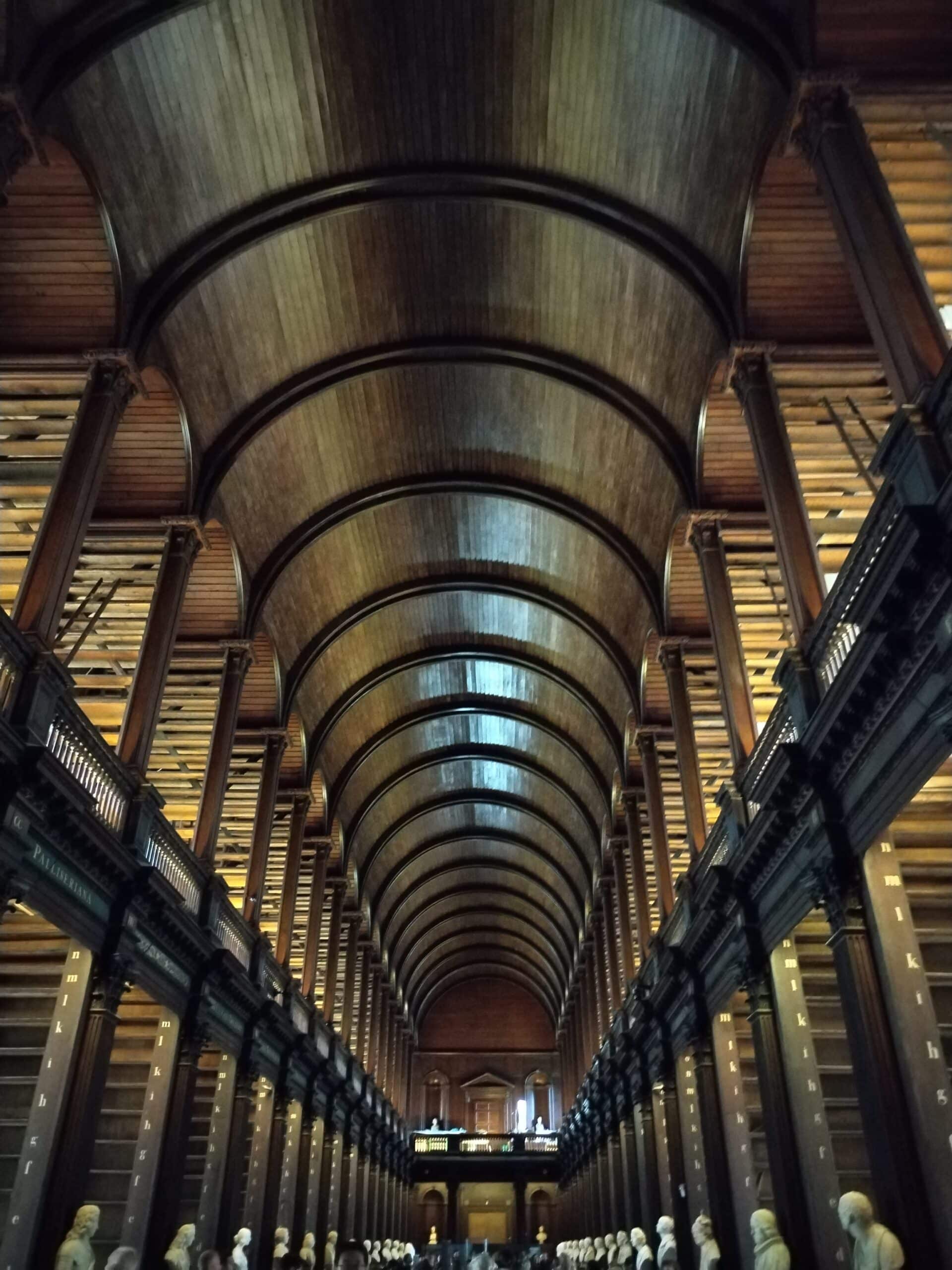
The Long Room in Trinity College
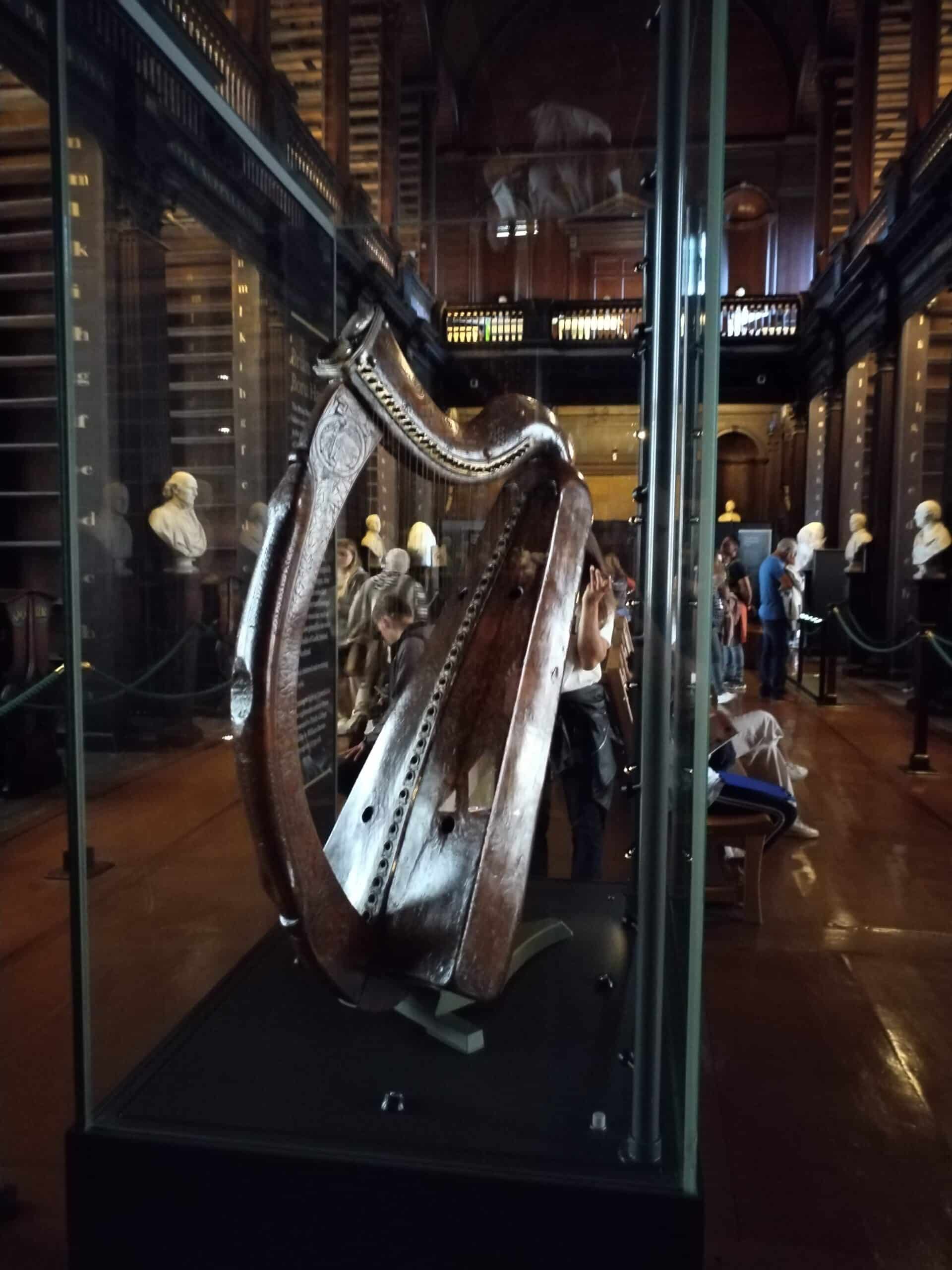
Brian Boru's Harp in the Long Room
Some of the notable artefacts that are still in there are:
Brian Boru's Harp
Better named the Trinity College Harp, it apparently dates from the 15th century. Brian Boru was the high king of Ireland best known for defeating a Viking-led army at Clontarf, an area in present-day Dublin, and ending the Viking Age of raiding, with the Norsemen behaving themselves somewhat after the defeat.
As the harp dates from at least four centuries after the great leader, the connection is erroneous. However, it is heavily symbolic in Irish culture as it is the design on which the harp on the Irish coat of arms is based. It is also used by Guinness as the basis for their famous harp insignia.
The 1916 Proclamation
Ireland's declaration of independence in the modern era, the rebels at Dublin's GPO read this out during the Easter Rising. One of the original copies is on display inside the Long Room.
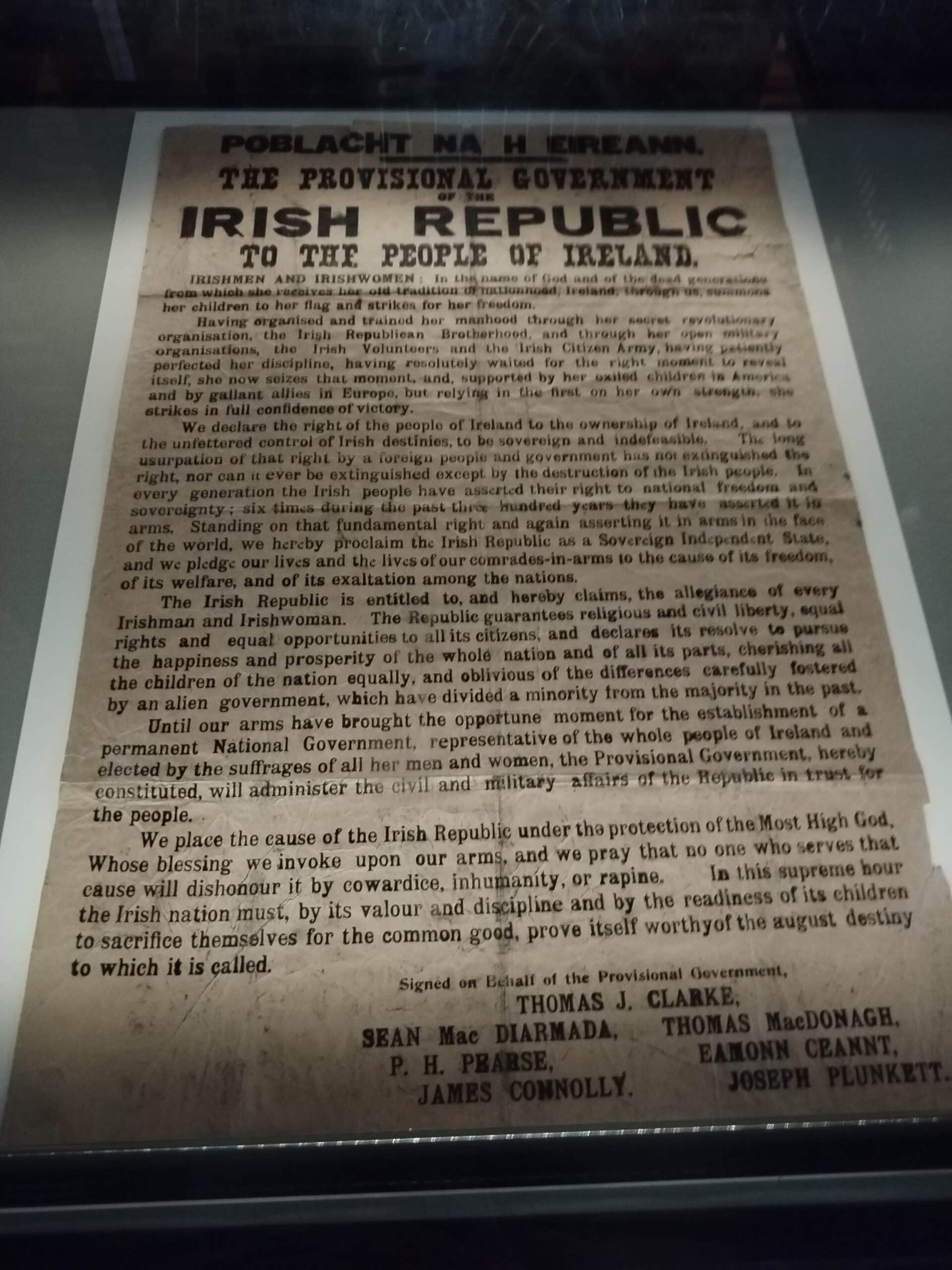
1916 Proclamation in Trinity's Long Room
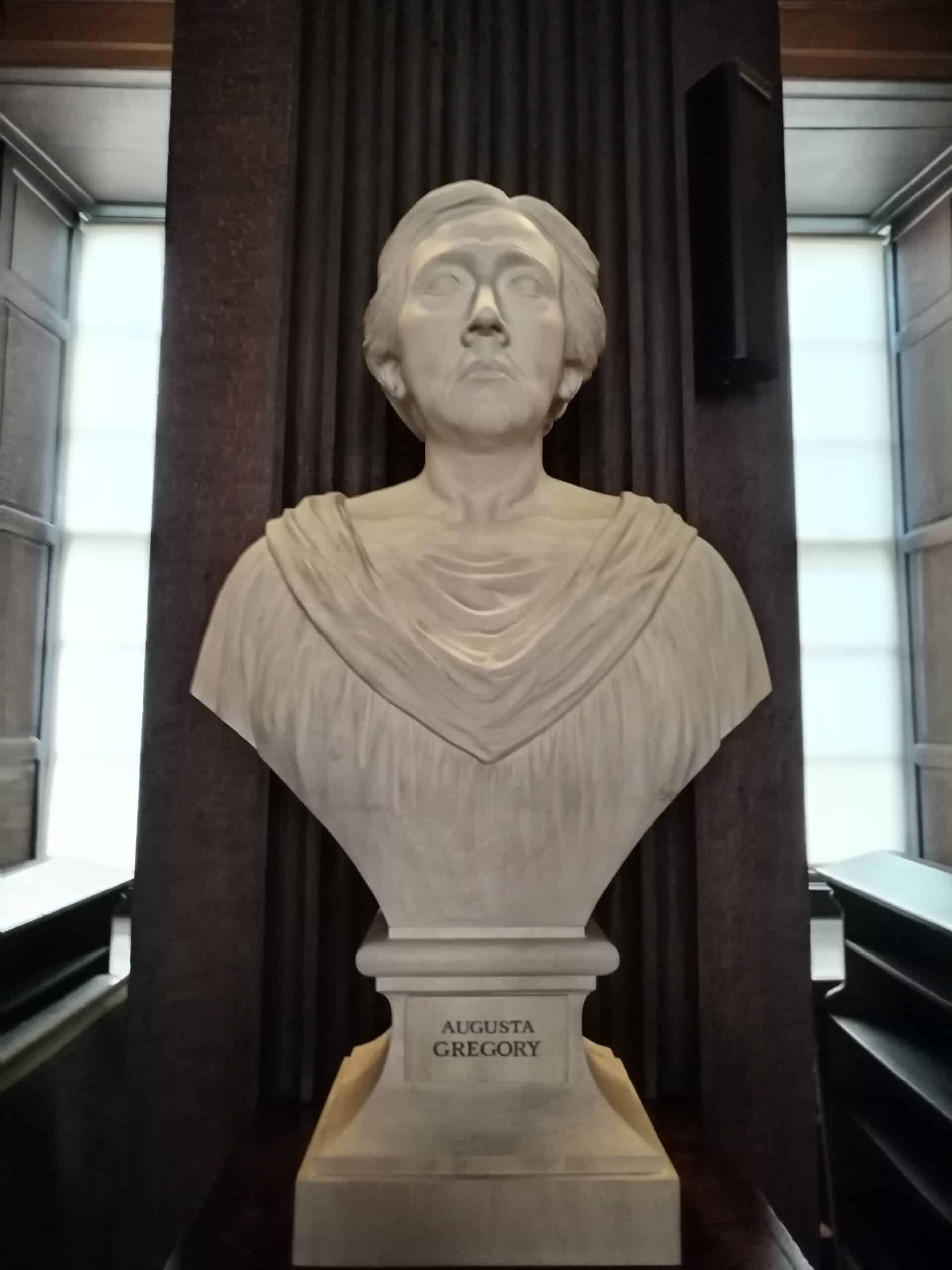
Lady Gregory in Trinity's Long Room
Busts for equality
It's taken quite some time for gender equality to catch up with the library here, but catch up it has. After more than four centuries, there is a female librarian and the Long Room's series of busts has been updated accordingly with famous female intellectuals. These include Lady Gregory, a famous 19th century Irish nationalist cultural activist, philosopher and suffragette Mary Wollstonecraft, scientist Rosalind Franklin and mathematician Ada Lovelace.
The Book of Kells-the copy
There is a copy of the original in the library, so you can get a photograph of the book. As we've said, the authorities take extreme care of the history which they have been entrusted with.
Beyond the ancient world to the future
Trinity continues to be a hub of learning and research in the modern era with an academic reputation spanning nearly five centuries. It is a pleasant place for a stroll-through and the public can enter and relax around its lawns and monuments.
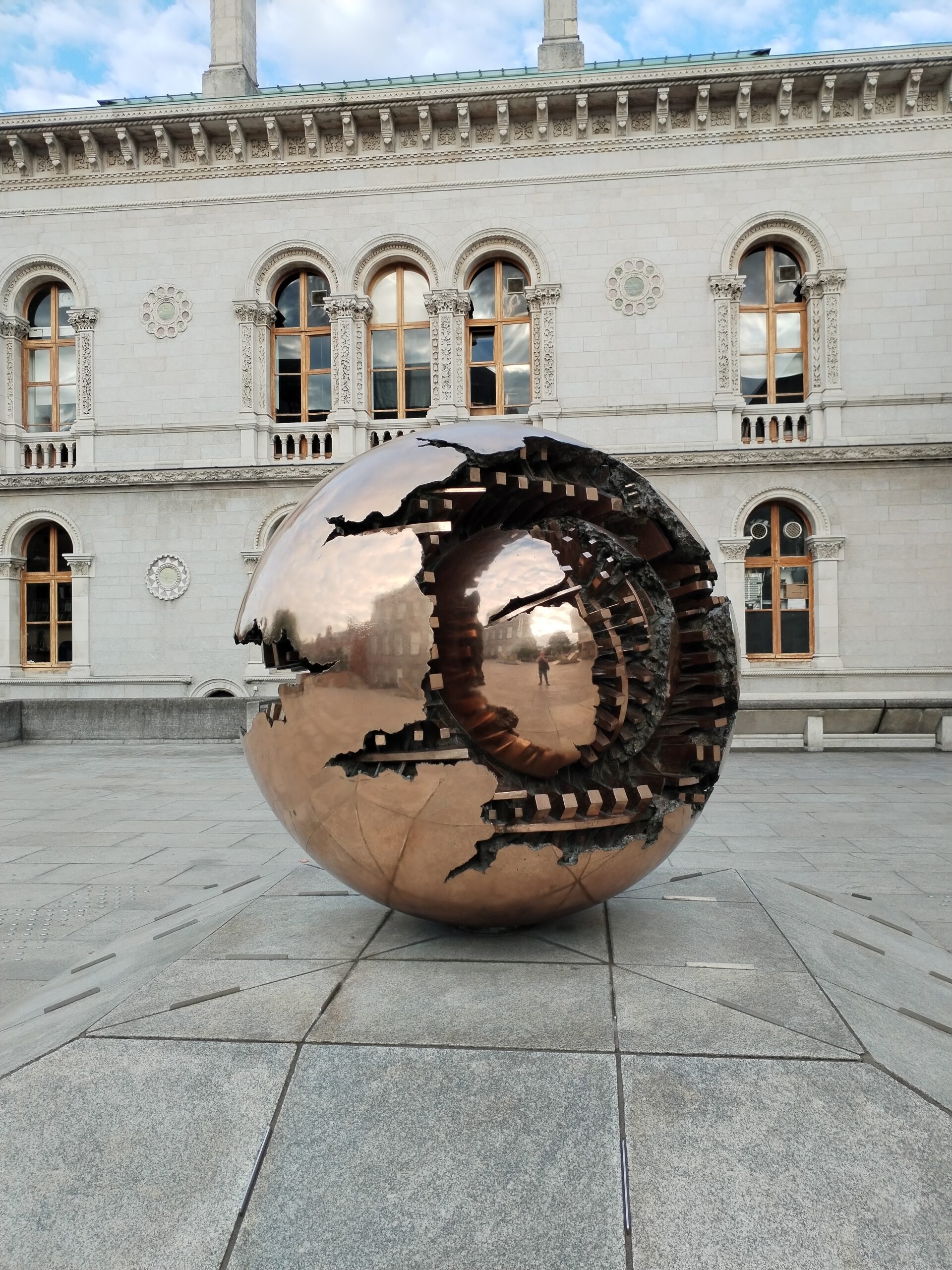
The Sphere within a Sphere by Arnaldo Pomodoro
Tickets and Entry
The university's web pages concerning the book and library tours can be seen here, so you can book your tickets online. There are various activities which you can book yourself into, including walks around the faculty, though we simply did the book and library tour. The web page says that the book and library tour lasts about half an hour though we entered with the 6PM bookings and were there until closing time at 7:15, so you can take your time while in there.
It's a worthy few hours spent studying the history of the land of saints and scholars, in a fair city of learned folk.
